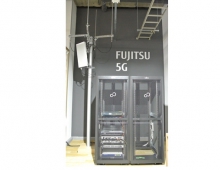
Fujitsu Develops 400 Gbps Optical Transceiver Architecture
Fujitsu Laboratories and Fujitsu R&D Center have developed a basic architecture for digital-signal processing in optical transceivers transmitting data at 400 gigabits per second over a single wavelength. The companies have developed new transceiver architecture in which, on the transmitter side, a specially designed reference signal is transmitted, and this is used on the receiving end to effectively compensate for distortion. Fujitsu successfully performed repeaterless transmission tests over a distance of 160 km. This technology accurately compensates for variations in the characteristics of transceiver components and distortions introduced in the transmission path, making it possible to communicate at 400 Gbps per wavelength using inexpensive optical transceiver components.
This technology can be applied to integrated optical transceiver components using silicon photonics, a technology expected to reduce costs and contribute to building next-generation distributed computing platforms that will support 5G mobile networking and diverse IoT services.
Fujitsu plans to continue testing the technology combined with silicon photonics technology, and aims to have a practical implementation of a 400 Gbps transceiver in 2019.
How it works
The typical approach used up to now has been to observe the output signal of the transmitter and compensate for signal distortions there in order to have the transmitter provide the highest quality signal possible. But when transmitting at 400 Gbps, the desired processing accuracy becomes very high, so it is difficult to compensate on the transmitter's end without significant increase of costs for components and circuits. Fujitsu has developed a new architecture in which, by transmitting a specially designed reference signal, it is possible to compensate for the transmitter's signal distortion on the receiver's end.
Existing receivers need to carry on phase recovery, which is used to detect the signal after compensating for distortion in the transmission path, but this has been problematic when the effect of the transmitter's distortion is significant. Fujitsu developed technology that, by using the transmitter's own reference signal, makes it possible to perform phase recovery without having to compensate for distortion in the transmission path. Receivers using this technology will first apply phase recovery and transmitter-distortion compensation, and then compensate for distortion in the transmission path, making it possible to recover modulated data even from highly distorted signals.





















